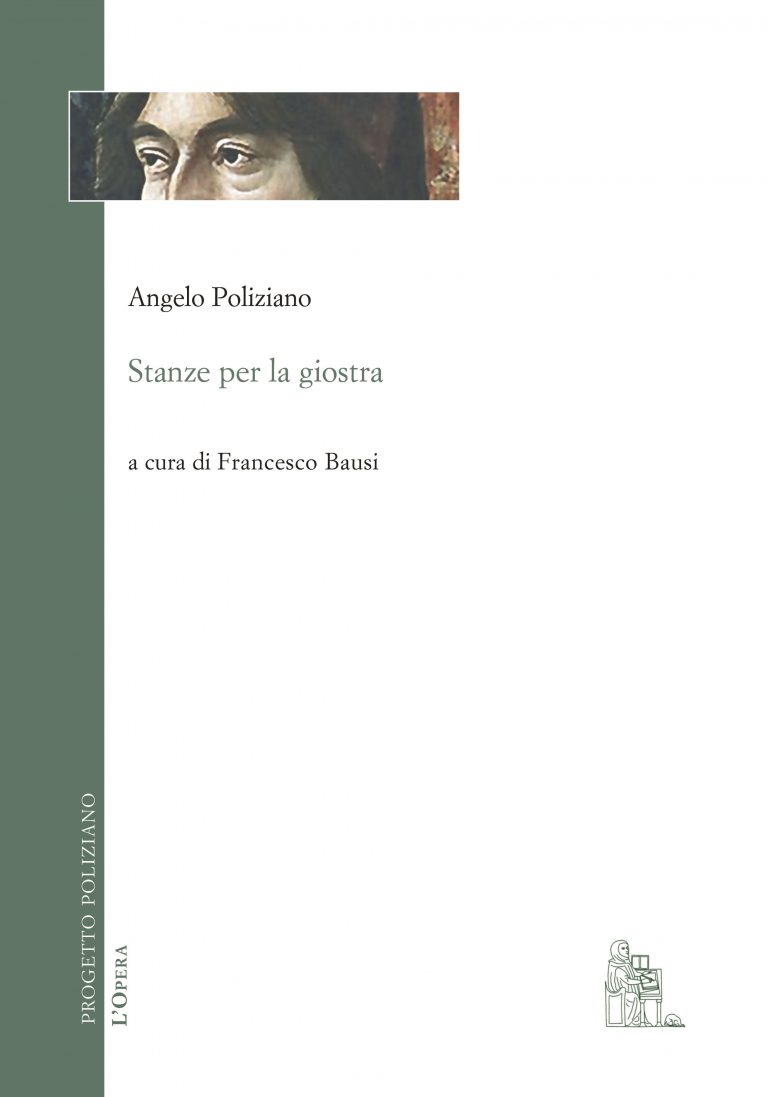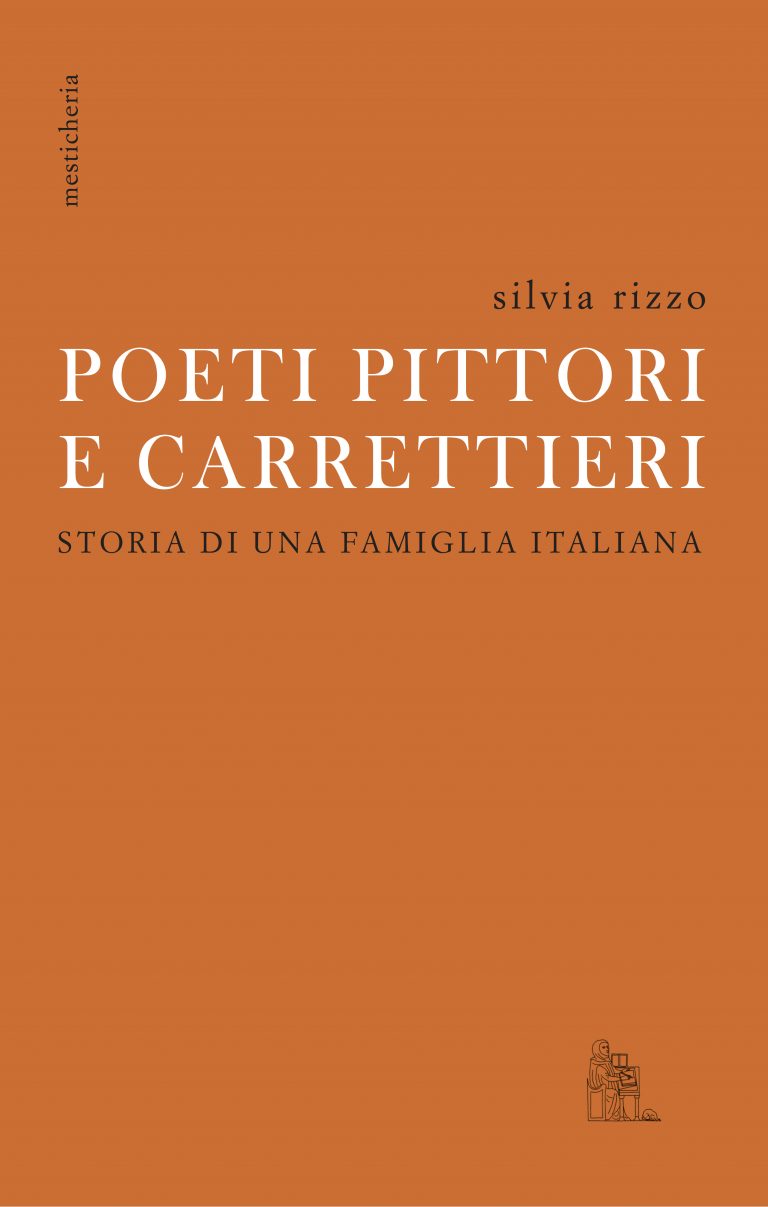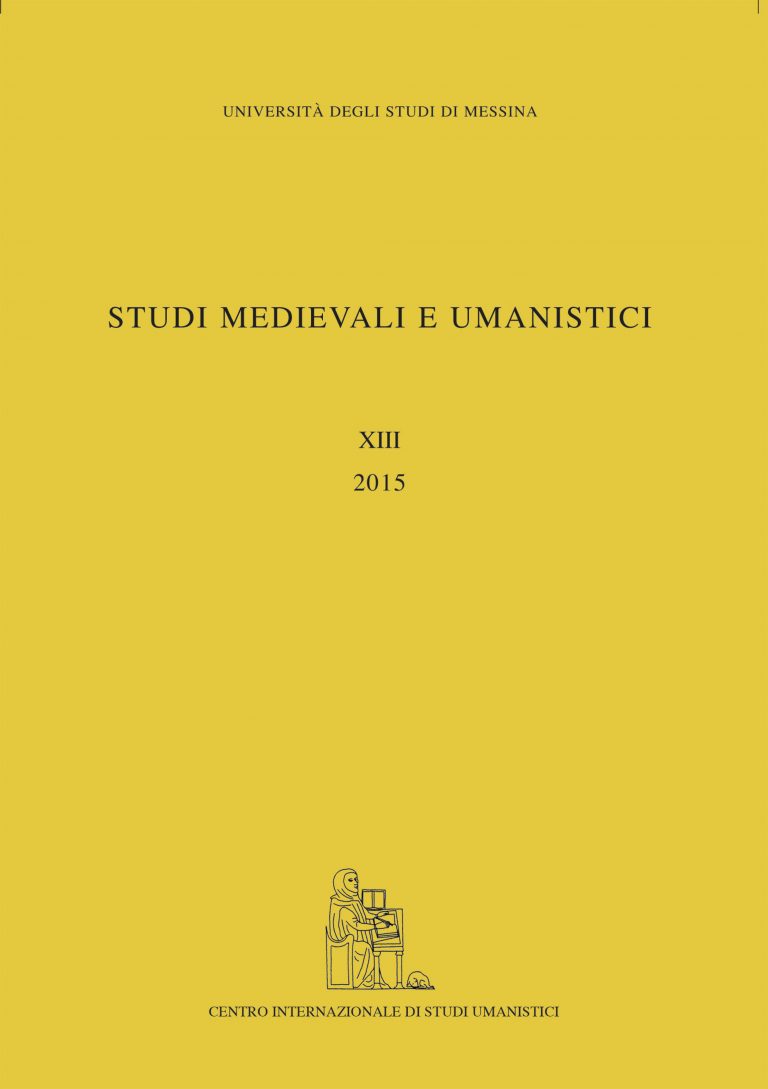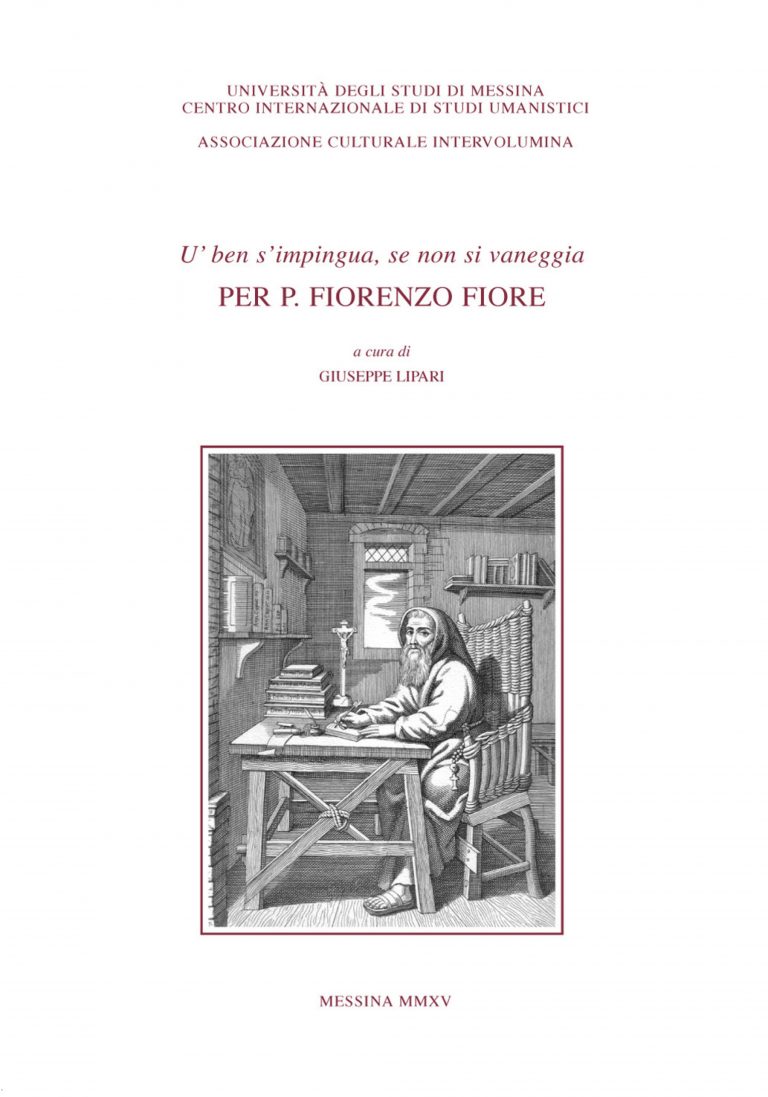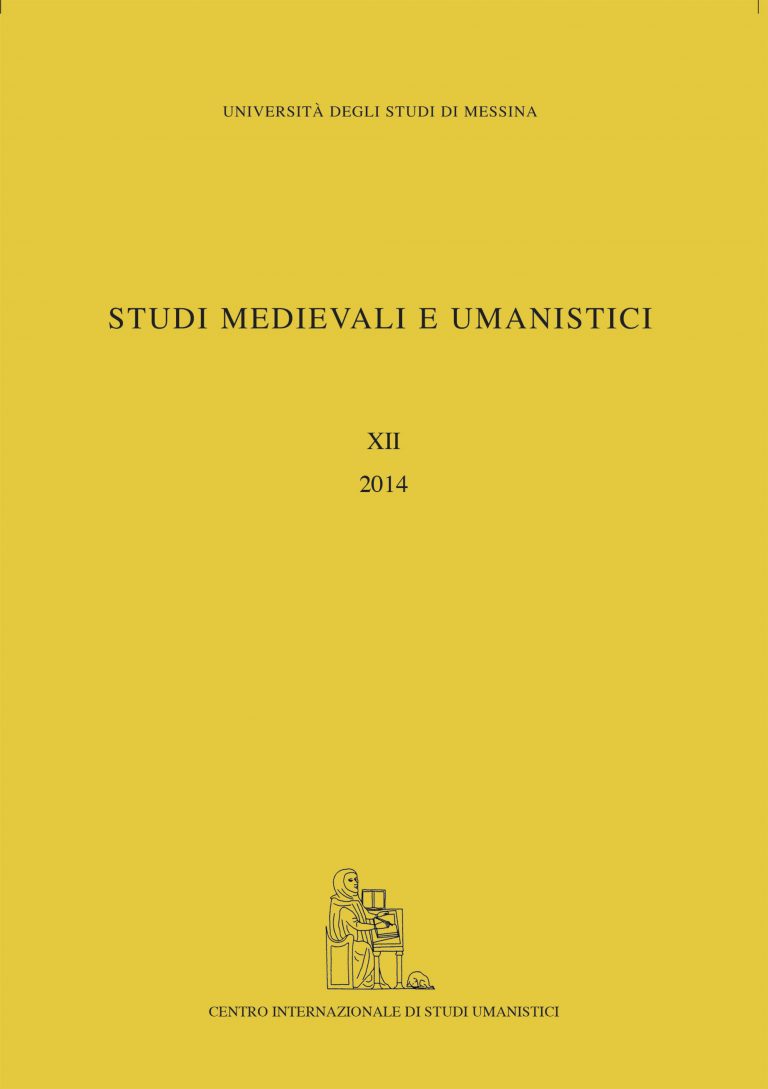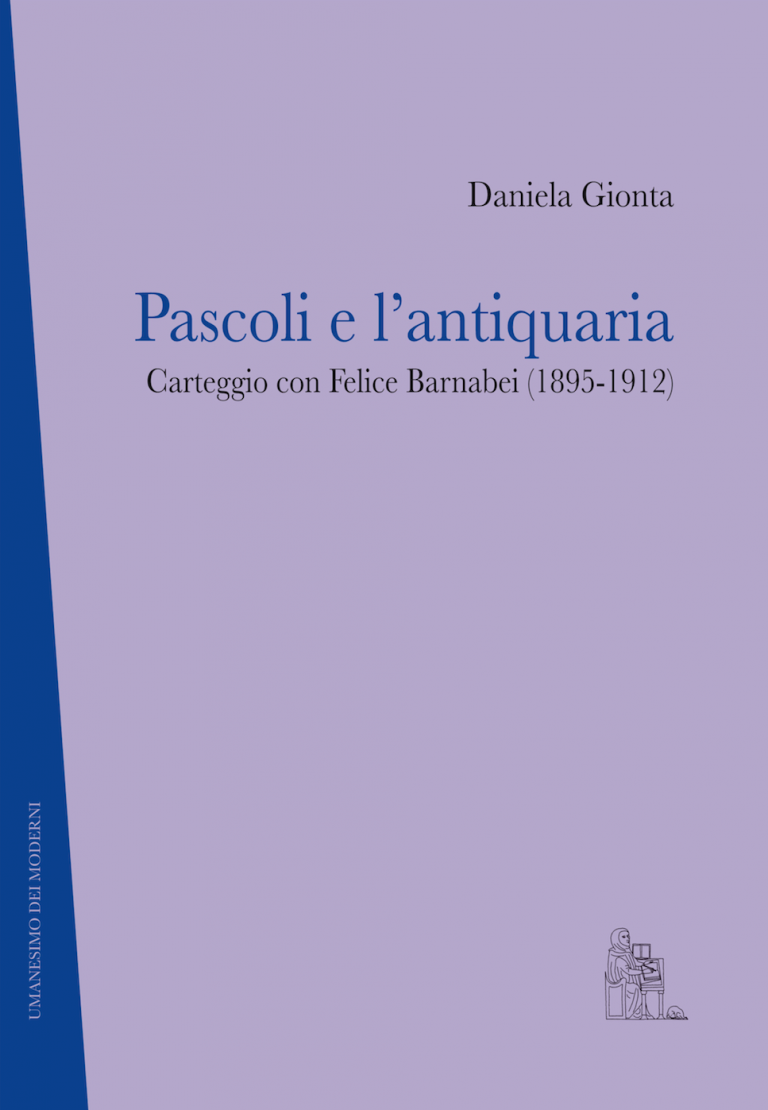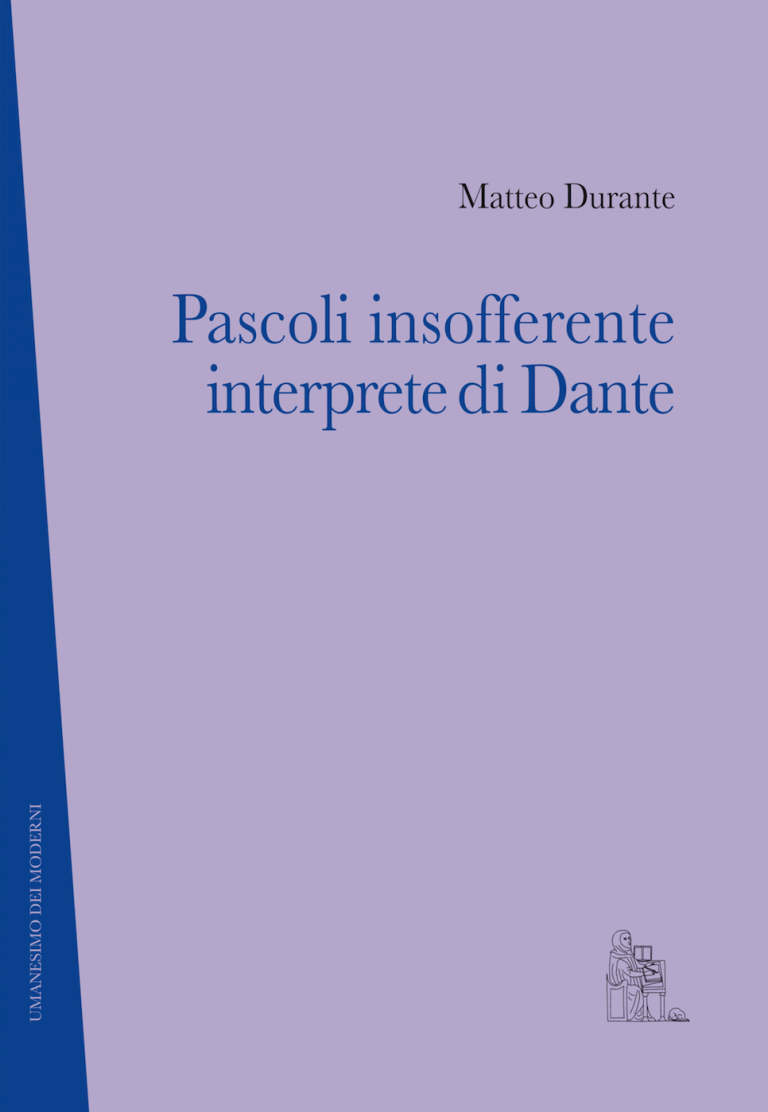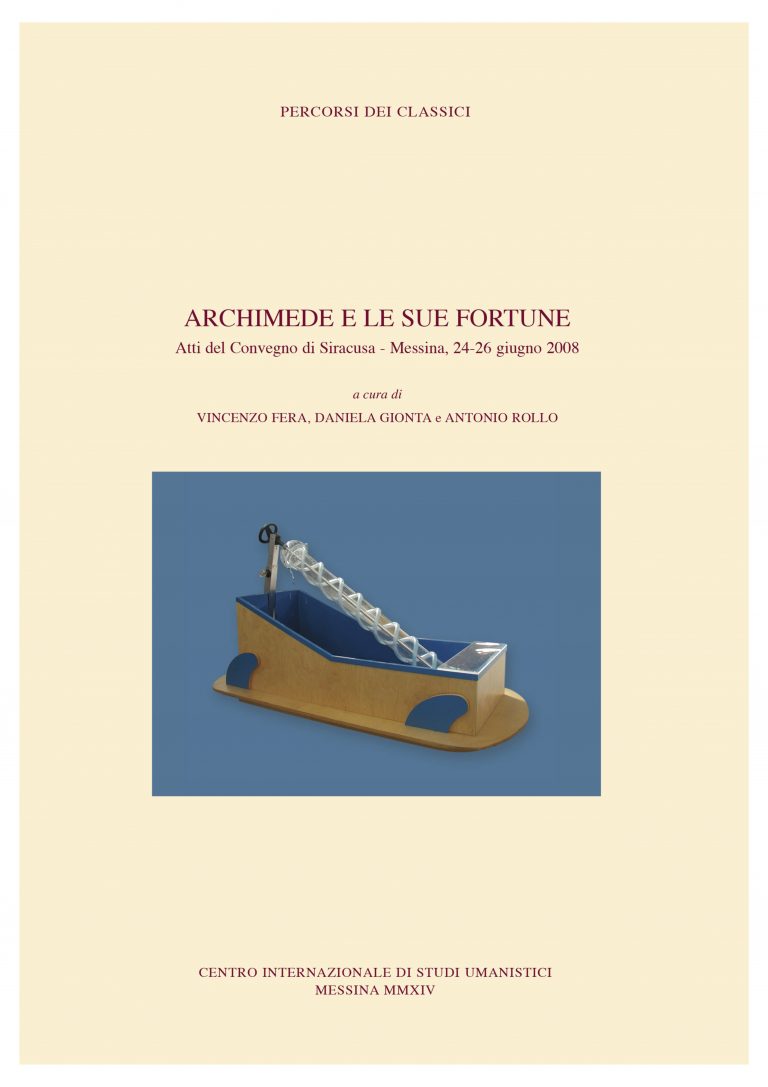a cura di Francesco Bausi Messina, Centro Internazionale di Studi Umanistici, (L’Opera, 4), 2016, 269 pp.; 25 cm. ISBN 978-88-87541-58-8 € 50 INDICE GENERALE Introduzione Preliminari I. La situazione testuale II. Le Stanze nella filologia moderna III. Una nuova ipotesi IV. L’ultima redazione delle Stanze (1494) V. Criteri generali di edizione VI. Per una nuova interpretazione delle Stanze Sigle e abbreviazioni Stanze di Messer Angelo Poliziano cominciate per la Giostra del Magnifico Giuliano di Pietro de’ Medici Libro primo Libro secondo Appendici I. Le didascalie marginali II. Lettera dedicatoria di Alessandro Sarti ad Antonio Galeazzo Bentivoglio Abbreviazioni…
Categoria: Collane
Poeti, pittori e carrettieri. Storia di una famiglia italiana
di Silvia Rizzo Messina, Centro Internazionale di Studi Umanistici, 2016, X-214 pp., tavv. XX; 22cm. ISBN 978-88-87541-78-6 € 40 INDICE GENERALE I. La casa di via Norcia II. La casa di via Chiana III. 5 febbraio 1944 IV. Nonna Elisa V. Alessandro Donadoni VI. Da Bergamo a Roma: Stefano Donadoni VII. Da Viterbo a Roma: Giuseppe Martellotti VIII. Un conferenziere di successo IX. Giornalismo allegro: Guido Vieni X. Una disgrazia di famiglia XI. La casa di via San Marco XII. Lo zio Anselmo XIII. Mirabile storia XIV. Da Roma alla Val d’Orcia Bibliografia di Silvia Rizzo Indice…
Studi medievali e umanistici, XIII
XIII (2015) Messina, Centro Internazionale di Studi Umanistici, 2015, 338 pp., tavv. XV; 25 cm. ISSN 2035-3774 € 120 INDICE GENERALE Caterina Malta, L’ultimo tempo della meditatio historiae. Per la vicenda redazionale del terzo Triumphus Fame del Petrarca Daniela Gionta, Epigrafia antica e ideologia politica nell’Italia del Quattrocento Rossella Bianchi, Nella biblioteca di Angelo Colocci: libri già noti e nuove identificazioni Paola de Capua, Pietro Corsi e l’ecloga Erasmus Vincenzo Fera, Agostino Sottili e Petrarca Laura Refe, In ricordo di Simona Mercuri TESSERE L. Orlandi, Escerti galenici nella biblioteca di Teodoro Gaza C. Corfiati, ‘Nuove’ carte Michelozzi…
Medioevo per Enrico Pispisa
scritti promossi e curati da L. Catalioto, P. Corsi, E. Cuozzo, G. Sangermano, S. Tramontana, B. Vetere Messina, Centro Internazionale di Studi Umanistici, 2014, 490 pp.; 23 cm. ISBN 978-88-87541-56-4 € 70 INDICE GENERALE Vincenzo Fera, Umanesimo di un medievista Salvatore Tramontana, Enrico Pispisa. La sua vita con la storia Bibliografia degli scritti di Enrico Pispisa Lorenzo Barile, «La strada dell’arricchirsi a tanti mercanti» e il «fallire poi sopra la roba d’altri»: origine e diffusione dei banchi pubblici e privati nel Mezzogiorno medievale Clara Biondi, Il testamento di Damiano Sallimpipi. Un «miles» nella Sicilia del Trecento Luciano Catalioto, Bartolomeo…
U’ ben s’impingua, se non si vaneggia
Per P. Fiorenzo Fiore. Nel suo 75° genetliaco, a 50 anni dall’ordinazione sacerdotale a cura di Giuseppe Lipari Messina, Centro Internazionale di Studi Umanistici, 2015, 542 pp.; 25 cm. ISBN 978-88-87541-60-1 € 85 INDICE GENERALE Vincenzo Fera, Lectoribus Padre Fiorenzo Fiore Tabula gratulatoria Dario Brancato, Una parodia messinese del Galateo: il Cittadinus Maccaronice Metrificatus (1647) di Partenio Zanclaio. Appendice Giampaolo Chillè, Conforme al disigno fatto per ditto mastro de Bonanno. Genesi e storia di un monumento cinquecentesco della cattedrale di Messina Diego Ciccarelli, Appunti per una storia dello Studio messinese di san Francesco Domenico Ciccarello, Una rara seicentina messinese:…
Le lettere di Francesco Patrizi
di Paola De Capua Messina, Centro Internazionale di Studi Umanistici, 2014, 421 pp., tavv. IV; 25 cm. ISBN 978-88-87541-54-0 € 80 INDICE GENERALE Premessa Abbreviazioni bibliografiche Tavola delle sigle I. Dalla ‘domus petrucia’ a Pio II II. Il governatorato di Foligno III. Tra riflessione politica e letteratura La tradizione REGESTI Sezione A. Il corpus folignate Sezione B. Lettere sparse Appendice documentaria Indice degli incipit Indice dei corrispondenti Indice delle tavole Indice dei manoscritti e delle fonti d’archivio Indice dei nomi
Studi medievali e umanistici, XII
XII (2014) Messina, Centro Internazionale di Studi Umanistici, 2014, 280 pp., tavv. XX; 25 cm. ISSN 2035-3774 € 120 INDICE GENERALE Caterina Malta, Storici e storia nella riflessione petrarchesca. Il problema del canone Monica Berté – Silvia Rizzo, «Valete amici, valete epistole»: l’ultimo libro delle Senili Giovanni Cascio, Sul destinatario di Sine nomine 14: l’arcivescovo Arnošt z Pardubic Dániel Kiss, Ludovico Regio, Giovanni Luchino Corti and Manilio Cabacio Rallo Luigi Orlandi, Baldassar Migliavacca lettore e possessore di codici greci Antonino Antonazzo, Ecdotica e interpretazione in un dictamen del giovane Boccaccio (Epist. IV) TESSERE A. Bellieni, «Lux altera Rome».…
Pascoli e l’antiquaria. Carteggio con Felice Barnabei (1895-1912)
di Daniela Gionta Messina, Centro Internazionale di Studi Umanistici, 2014, 155 pp.; 25 cm. ISBN 978-88-87541-62-5 € 30 INDICE GENERALE Premessa I. Hederae similes lapsas amplectimur aedes. Antiquaria e poesia. II. Due casi esemplari: Pomponia Graecina e La civetta CARTEGGIO DI GIOVANNI PASCOLI CON FELICE BARNABEI (1895-1912) Indice dei manoscritti e delle fonti d’archivio Indice dei nomi
Pascoli insofferente interprete di Dante
di Matteo Durante Messina, Centro Internazionale di Studi Umanistici, 2014, 266 pp.; 25 cm. ISBN 978-88-87541-75-5 € 40 INDICE GENERALE Premessa I. Minerva oscura II. Da Minerva oscura a Sotto il velame III. Da Sotto il velame a La mirabile visione IV. Prolusione al Paradiso e ultime prove dantesche Nota conclusiva Indice dei manoscritti e delle fonti d’archivio Indice dei nomi
Archimede e le sue fortune
Atti del Convegno di Siracusa-Messina, 24-26 giugno 2008 a cura di Vincenzo Fera, Daniela Gionta, Antonio Rollo Messina, Centro Internazionale di Studi Umanistici, 2014, 737 pp., tavv. XXXIX; 25 cm. ISBN 978-88-87541-81-6 € 120 INDICE GENERALE Nota editoriale N. Tchernetska, The Archimedes Palimpsest Project: Main Results K. Saito, Johan Ludvig Heiberg e l’edizione critica di Archimede: i fogli perduti del Metodo G. Ucciardello, Sui nuovi frammenti d’Iperide nel ‘palinsesto di Archimede’ A. Rollo, Il perduto Archimede di Giorgio Valla I. Mountriza, Le problème des bæufs: un noveau témoin G. Morelli, Lo Stomachion di Archimede nelle testimonianze antiche E.…

